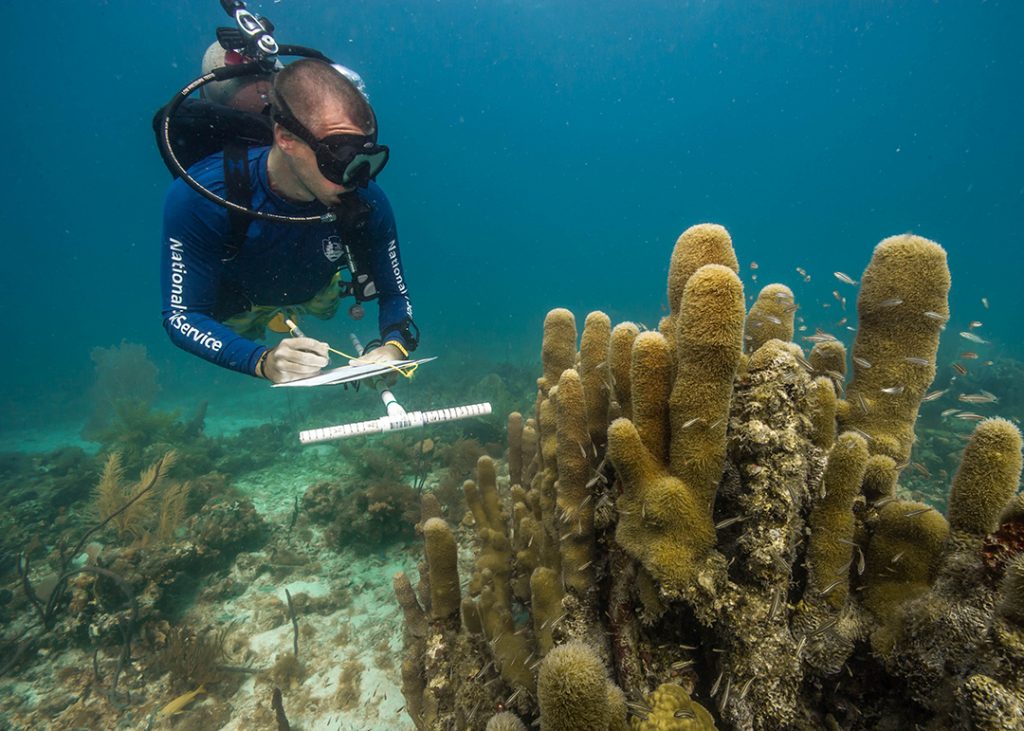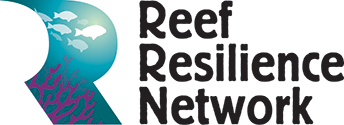Ecological Resilience Assessments
Resilience indicators are those for which there is strong evidence of a link to the capacity of corals or a coral community to resist impacts or recover from disturbances, and indicators that can reliably be measured or assessed. Scientists have prioritized the following indicators and anthropogenic stressors as likely to be the most important to supporting the resilience of coral reef ecosystems:
The following anthropogenic stressors can also be used as key resilience indicators:
- Nutrients (pollution)
- Sedimentation
- Physical human impacts
- Fishing pressure

Diver on a monitoring dive in the Florida Keys. The striped pole is used to estimate distance and sizes of fish, corals, or other reef organisms. Photo © Shaun Wolfe/Ocean Image Bank
While the list of indicators above may be used to help managers prioritize which ones to include in a resilience assessment or monitoring program, it is also useful for managers to review key publications to identify additional indicators to use in their local context. ref
